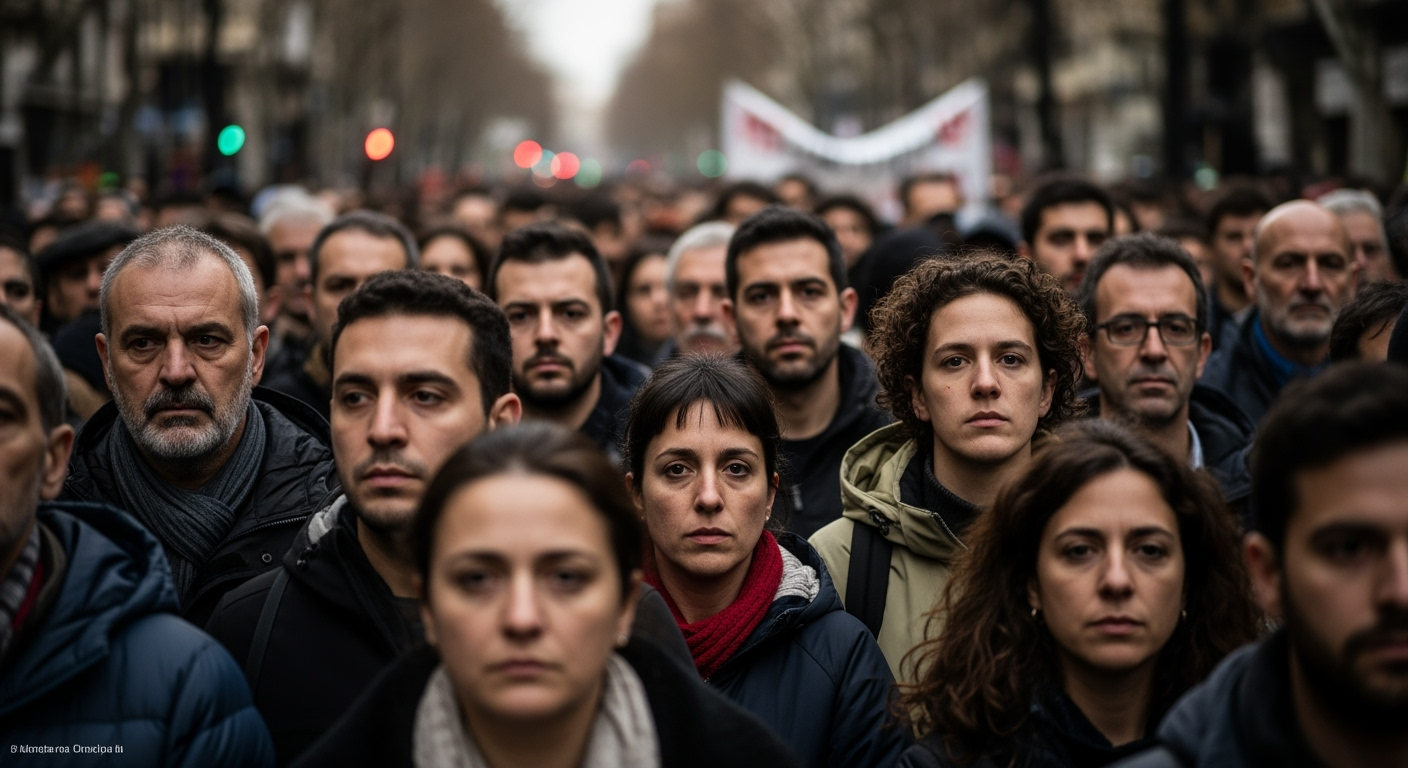Related Articles

Bolsonaro Appeals Historic 27-Year Coup Conviction, Brazil's Political Future Hangs in Balance




VALENCIA, Spain – A year after catastrophic floods ravaged Spain's eastern Valencian Community, leaving more than 220 dead and causing billions in damages, tens of thousands of citizens took to the streets of Valencia on Saturday to voice their enduring anger and demand accountability from regional authorities. The demonstration, marking the first anniversary of the devastating event, underscored deep-seated public frustration over what many perceive as a slow and inadequate government response to one of Europe's deadliest natural disasters in recent memory.
The protests, drawing over 50,000 participants according to local authorities, focused primarily on the regional leader, Carlos Mazón, with demonstrators calling for his resignation. Many carried photographs of flood victims, transforming the commemorative event into a powerful public outcry against alleged governmental negligence and a perceived failure to protect the lives and livelihoods of residents. The grievances centered on delayed emergency alerts and a perceived lack of preparedness that turned a severe weather event into an unprecedented humanitarian crisis.
The disaster unfolded on October 29, 2024, when torrential rains, brought by an isolated low-pressure area (known as a DANA or "cold drop"), unleashed more than a year's worth of precipitation in a matter of hours across parts of eastern Spain. The Valencian Community, along with areas of Castilla-La Mancha and Andalusia, bore the brunt of the downpour. Rivers and typically dry riverbeds swelled beyond their banks, transforming into raging torrents that swept through towns and villages. The Rambla del Poyo, normally a dry channel, became a torrent unleashing over 2 million liters of water per second.
The floodwaters claimed at least 229 lives in the Valencia region alone, with the total death toll across affected areas rising to 237, making it one of Spain's deadliest natural disasters. The human cost was compounded by immense material destruction. Over 100,000 cars were damaged, and 1,800 businesses were destroyed, contributing to an estimated total economic damage ranging from 10.7 billion to 18 billion euros. Thousands were left homeless or displaced, their lives upended as homes were submerged, infrastructure collapsed, and entire communities were caked in mud.
Central to the public's outrage is the timeline of official warnings. While the national weather agency (AEMET) issued its highest alert level for torrential rains by 7:31 AM on October 29, 2024, the Valencian regional government under Carlos Mazón did not send flood alerts to mobile phones until 8:11 PM that day. This critical 12-hour delay meant that for many residents, warnings arrived only after floodwaters had already begun to inundate streets, engulf cars, and pour into homes, trapping individuals and exacerbating the tragedy.
Adding to the controversy, reports surfaced that Mazón was engaged in an hours-long lunch with a journalist on the day the floods struck, even appearing in photos tweeted by his staff for a sustainable tourism certification. Protesters widely condemned this as a demonstration of leadership failure during a burgeoning crisis. Mazón, for his part, has defended his administration's actions, citing the unforeseeable magnitude of the event and claiming insufficient and delayed information from national authorities. However, AEMET's documented timeline contradicted his claims, and examples like the Japanese embassy issuing a proactive warning to its residents hours in advance highlighted discrepancies in official communication.
Spain's decentralized governance structure places disaster management responsibilities largely on regional administrations. This framework became a point of contention, with critics arguing that poor coordination between national and regional levels contributed to delays in deploying emergency resources. In the immediate aftermath, volunteers often arrived in the hardest-hit areas before official emergency units, further fueling public resentment. This latest demonstration in Valencia follows earlier protests in November 2024 and March 2025, signaling persistent public demand for accountability that has also extended to national figures, with King Felipe and Prime Minister Pedro Sánchez reportedly facing public anger during visits to affected areas.
Beyond the immediate administrative failures, the floods have intensified discussions about climate change and Spain's preparedness for extreme weather events. Scientists indicate that human-induced climate change likely made the rainfall approximately 12 percent heavier and doubled the likelihood of storms of such intensity. Experts have also pointed to rapid urban development on floodplains and river basins as a factor increasing vulnerability, underscoring that while climate change intensified the event, inadequate planning amplified its consequences.
In response to the catastrophe, the Spanish government has taken some steps. One month after the floods, Spain introduced a paid "climate leave" policy, allowing workers to stay home during extreme weather events when conditions are unsafe for commuting. Prime Minister Sánchez also announced a substantial aid package for Valencia, emphasizing the need to rebuild and adapt the territory to the climate emergency. However, a point of considerable local criticism has been the Mazón administration's prior decision to shut down the Valencian Emergencies Unit, which had been established after previous floods and deemed a "superfluous expense." This decision is now seen by many as a critical lapse in foresight and preparedness.
A year after the harrowing events, the city of Valencia remains deeply scarred, both physically and emotionally. The anniversary protests serve as a poignant reminder that while floodwaters may recede, the demands for justice and accountability from a grieving community do not. The collective memory of delayed alerts, leadership perceived as detached, and the immense loss continues to fuel a powerful movement seeking not just financial compensation but fundamental changes in disaster preparedness and governance. The unresolved tension between citizens and authorities highlights the ongoing struggle for transparent leadership and effective climate adaptation strategies in the face of increasingly severe weather phenomena.